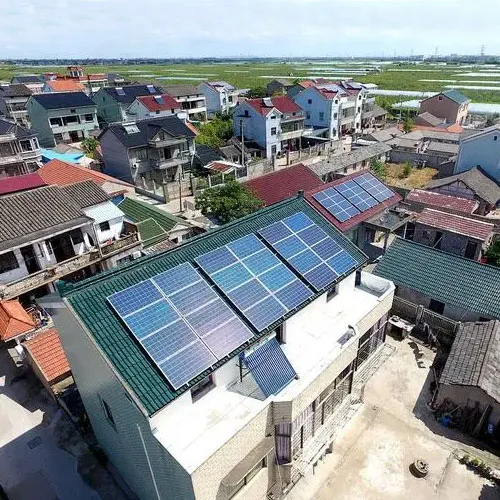Harnessing the Sun: A Comprehensive Guide to Solar Power Systems
2024-10-30
As the world shifts towards sustainable energy solutions, solar power systems have emerged as a leading choice for both residential and commercial applications. This blog will explore the components, benefits, and considerations of solar power systems, providing a thorough understanding for those interested in making the switch to solar energy.
What is a Solar Power System?
- Definition: A solar power system captures sunlight and converts it into electricity using photovoltaic (PV) panels. These systems can be grid-tied, off-grid, or hybrid, depending on the application and energy needs.
- Components: Discuss the main components, including solar panels, inverters, batteries, mounting systems, and monitoring equipment.
How Solar Power Systems Work
1. Solar Panels:
- Explain how solar panels, made of photovoltaic cells, convert sunlight into direct current (DC) electricity.
- Discuss factors that affect panel efficiency, including orientation, tilt, and shading.
2. Inverters:
- Describe the role of inverters in converting DC electricity to alternating current (AC), which is used in most home appliances.
- Highlight different types of inverters: string inverters, microinverters, and power optimizers.
3. Battery Storage:
- Explore the option of integrating battery storage systems, which store excess energy generated during the day for use at night or during cloudy weather.
- Discuss the benefits of battery systems in providing backup power and increasing energy independence.
4. Monitoring Systems:
- Emphasize the importance of monitoring systems for tracking energy production, consumption, and system performance.
- Discuss how real-time data can help optimize energy use and maintenance.
Benefits of Solar Power Systems
1. Environmental Impact:
- Highlight how solar energy reduces greenhouse gas emissions and reliance on fossil fuels.
- Discuss the role of solar power in mitigating climate change and promoting sustainable practices.
2. Cost Savings:
- Explore the potential for significant savings on electricity bills over time, especially with rising energy costs.
- Mention government incentives, tax credits, and rebates that can reduce the initial investment.
3. Energy Independence:
- Discuss how solar power systems provide a degree of energy independence, reducing reliance on utility companies.
- Explain how off-grid systems can be especially beneficial in remote areas.
4. Increase in Property Value:
- Share research indicating that homes with solar power systems can have higher property values and faster sales.
Considerations for Installation
- Site Assessment: Emphasize the importance of a thorough site assessment to determine solar potential based on location, roof orientation, and shading.
- Permitting and Regulations: Discuss the need to navigate local regulations and obtain necessary permits before installation.
- Professional Installation: Highlight the benefits of hiring experienced professionals to ensure proper installation and compliance with safety standards.
Solar power systems represent a significant step towards a sustainable energy future. By understanding their components, benefits, and installation considerations, individuals and businesses can make informed decisions about adopting solar energy and contributing to a greener planet.



